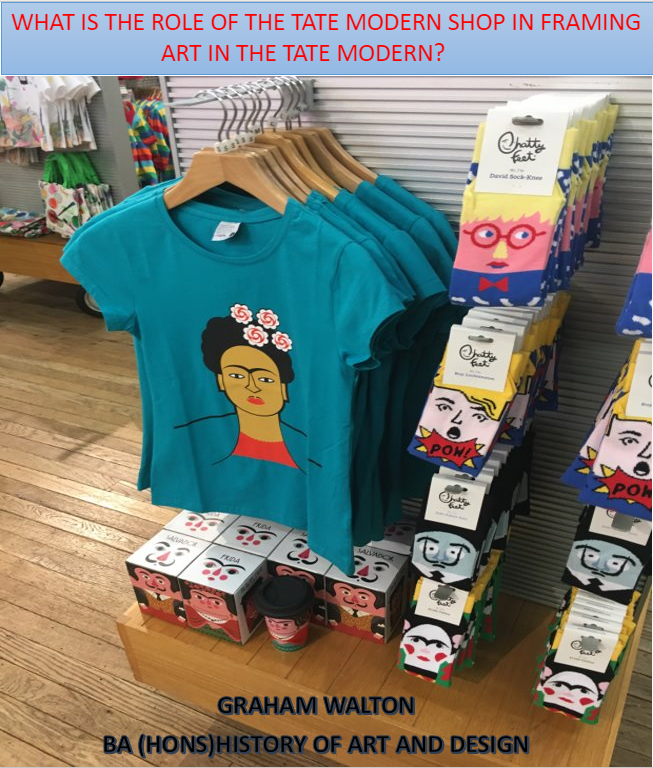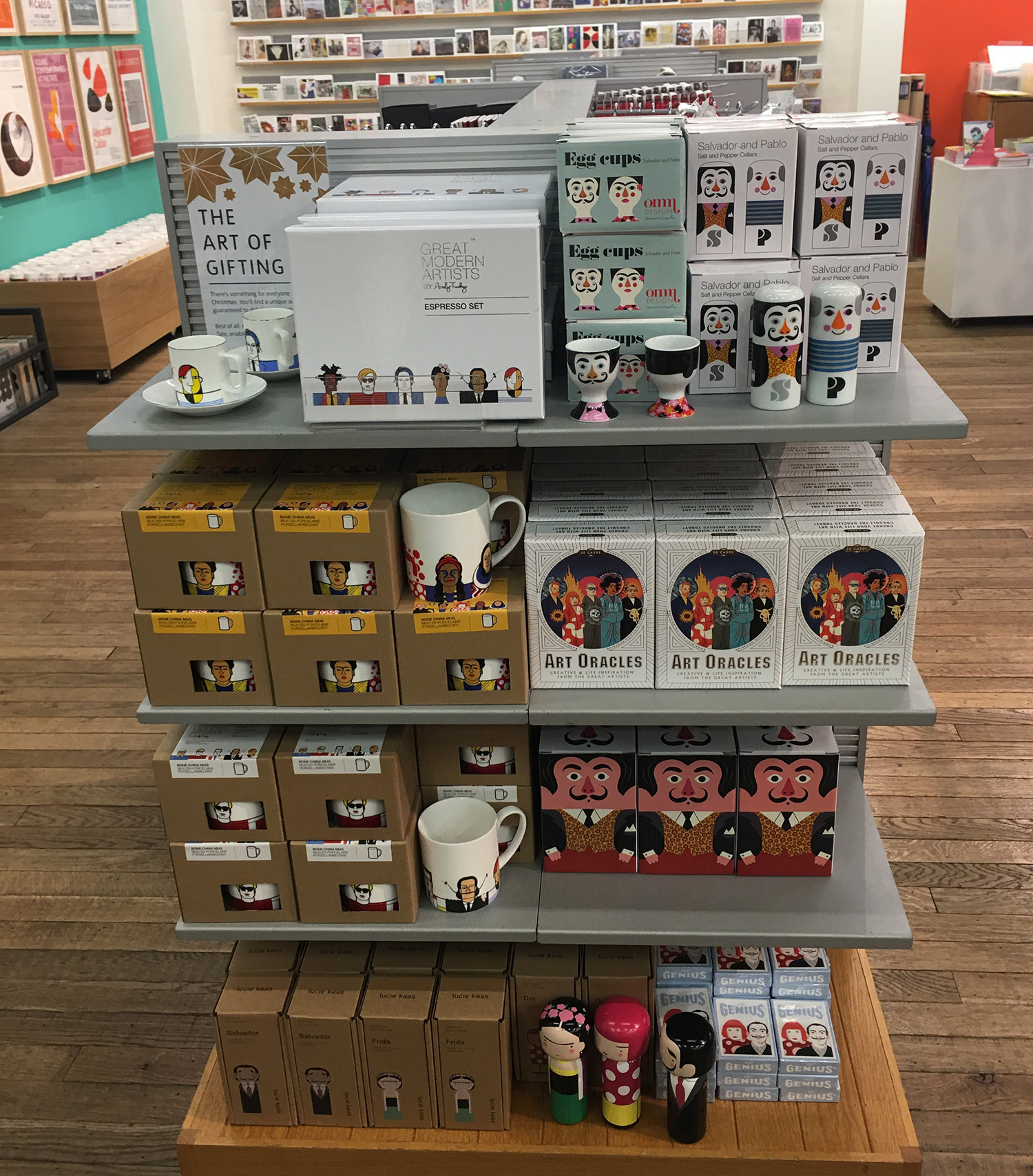
Many visitors to the Tate Modern consider a visit to the permanent shops as part of their experience of the museum. This dissertation considers the role and purpose of the Tate Museum shops and their relationship to the art in the Tate Modern galleries. It also discusses the history and role of museum shops and whether they have any other function or purpose than additional funding for the museum. The financial contribution all the Tate shops contribute is £1.34 million compared to the overall Tate income of £114 million. The Tate Modern contributes proportionally about £800,000, but this is a small share of the overall Tate income.
Art museums have changed considerably within the last four decades, driven by postmodern thinking and attitudes. This dissertation discusses how the Tate Modern shops reflect these new ideas. Many of the items offered in the Tate Modern shops could be labelled as kitsch, but kitsch falls neatly into postmodern thinking and the dissertation discusses these concepts. This dissertation looks more closely at the merchandise which uses artist Frida Kahlo’s imagery and it concludes that her beliefs and art are disrespected and trivialised and her image commodified. Art museums would like to offer a democratic and accessible space to all genders, classes, and ethnicities. The shops’ representation of gender and LGBTQ+ issues is good, but not so for BAME visitors. The main problem with accessibility is that the merchandise is expensive and therefore excludes visitors on low incomes. Overall, the merchandise in the shops does not frame the art in the Tate Modern galleries. There is a requirement that the Tate Modern shops make as much income as possible and therefore the merchandise might have little relationship to the permanent exhibits in the galleries.
